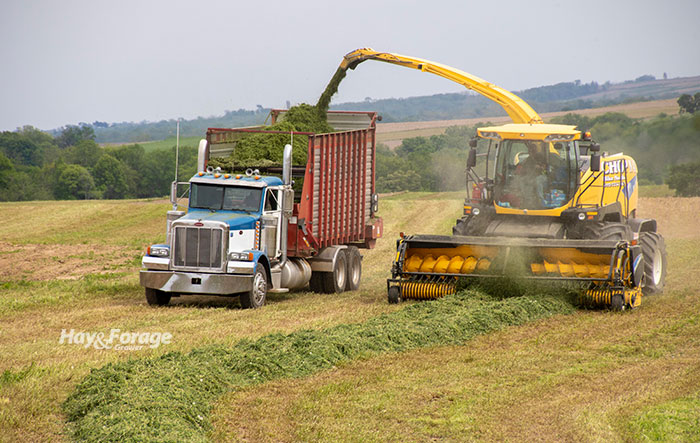Prepare your inoculant applicator for winter |
| By Amber Friedrichsen, Associate Editor |
|
|
|
As we flip the calendar from November to December, most harvest equipment is making its way to the machine shed for the season. Without properly winterizing equipment — including inoculant applicators — there is a greater risk of breakdowns and repairs next year. The two main types of inoculant applicators are ultra-low volume and pressure-type. Steve Murty, a forage specialist with Vita Plus, recommends cleaning both of these systems with warm water and a small amount of dish soap before storing them. Applicator tanks, in particular, must be thoroughly cleaned; otherwise, dirt will clog hoses, filters, and nozzles. After rinsing the system with a soapy solution, disconnect all hoses, nozzles, and the pump tube to allow water to escape. Ensure the applicator dries completely to prevent water from accumulating and freezing. “Very low compressed air pressure can also help purge the system of water, but be careful not to damage sensitive parts, like pump diaphragms on pressurized systems,” Murty adds. After cleaning an ultra-low volume inoculant applicator, Murty suggests adding recreational vehicle (RV) antifreeze to its flush bottles. Run the system for one or two minutes to allow the antifreeze to circulate through the pump mechanism, flow meter, and all of the hoses. Then, remember to rinse the applicator with water before using it in the spring. Murty notes RV antifreeze can also be used on pressure-type inoculant applicators by running it through the system until all hoses and nozzles have been flushed. No matter the system, he advises producers to avoid using automotive antifreeze, as these products can have toxins that will negatively affect inoculant bacteria during application. Before storing equipment with ultra-low volume inoculant applicators, release the clamp on the pump tube to avoid flat spots on the pump hoses. With that said, Murty says removing both types of inoculant applicators from machinery and keeping it in a heated building is the best form of equipment care.  Amber Friedrichsen Amber Friedrichsen served as the 2021 and 2022 Hay & Forage Grower summer editorial intern. She currently attends Iowa State University where she is majoring in agricultural communications and agronomy. |

